
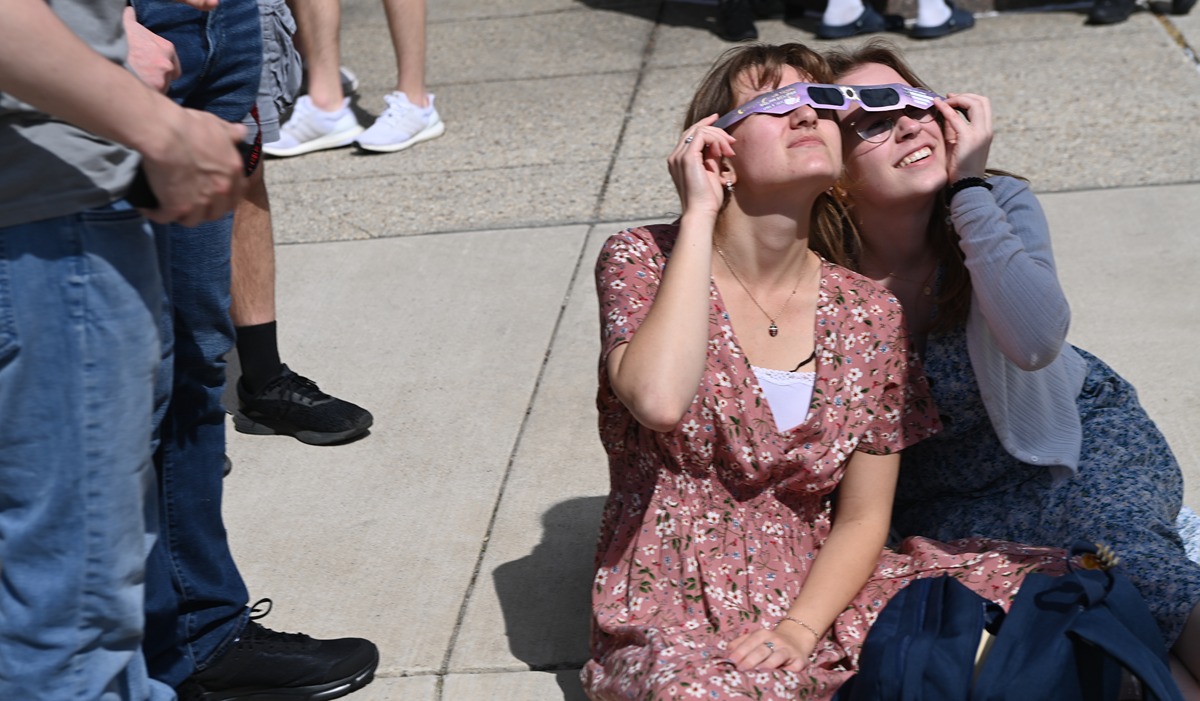
The busy end of the semester came to a standstill as people gathered to wonder at the glory of God’s creation during the April 8 solar eclipse. Although Washington, D.C. was outside the path of totality, nothing could diminish the enthusiasm on The Catholic University of America’s campus. People poured out of their classrooms, dorm rooms, and boardrooms to share the experience of the awe-inspiring sight – sharing protective glasses, too, so that everyone could safely observe.
The largest crowd formed outside Hannan Hall for a viewing party organized by the Department of Physics, where researchers handed out eclipse glasses, set up a solar telescope, and shared their passion for space science. The activities were coordinated by physics doctoral students Rachel Morin, Elizabeth Fletcher, Helen McDonough, and Michael Bellacicco, a mechanical engineering junior who is also a District of Columbia Space Grant Consortium student ambassador.
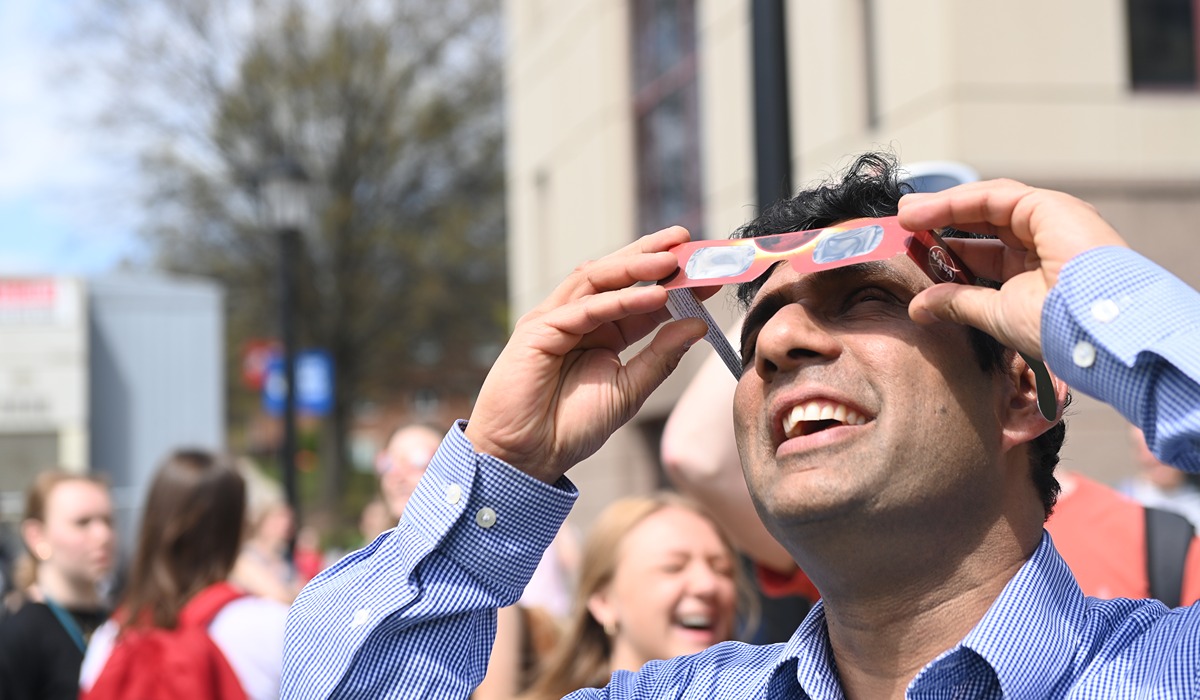
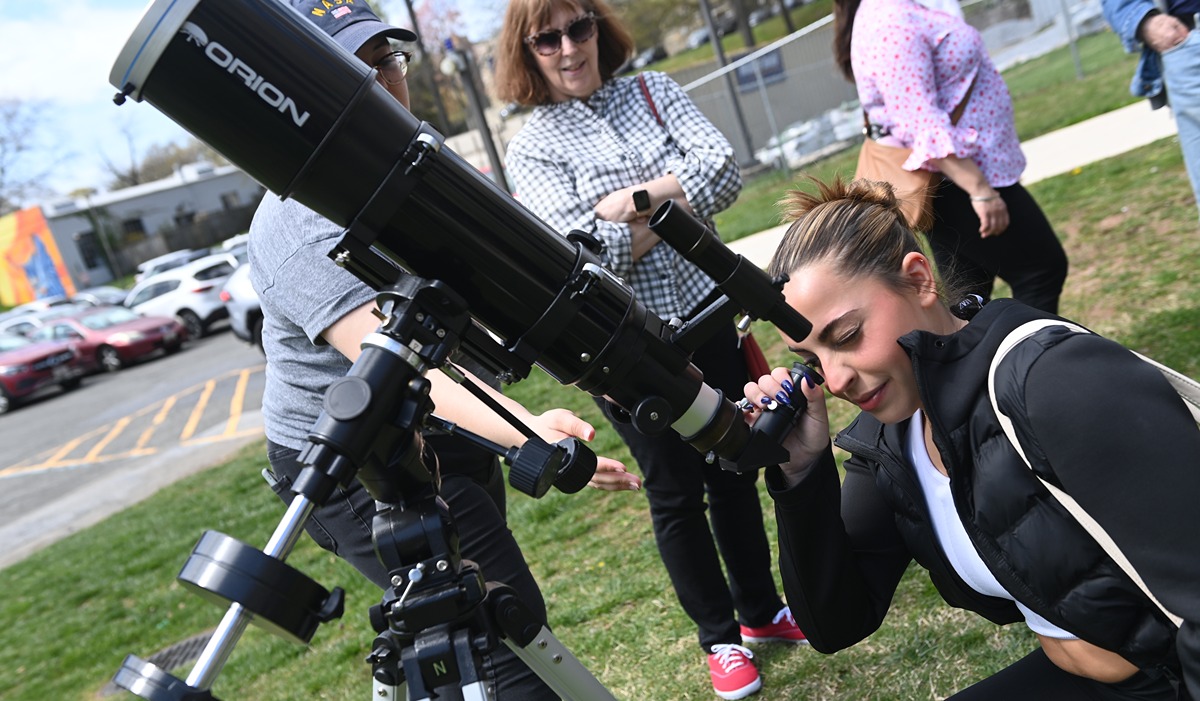
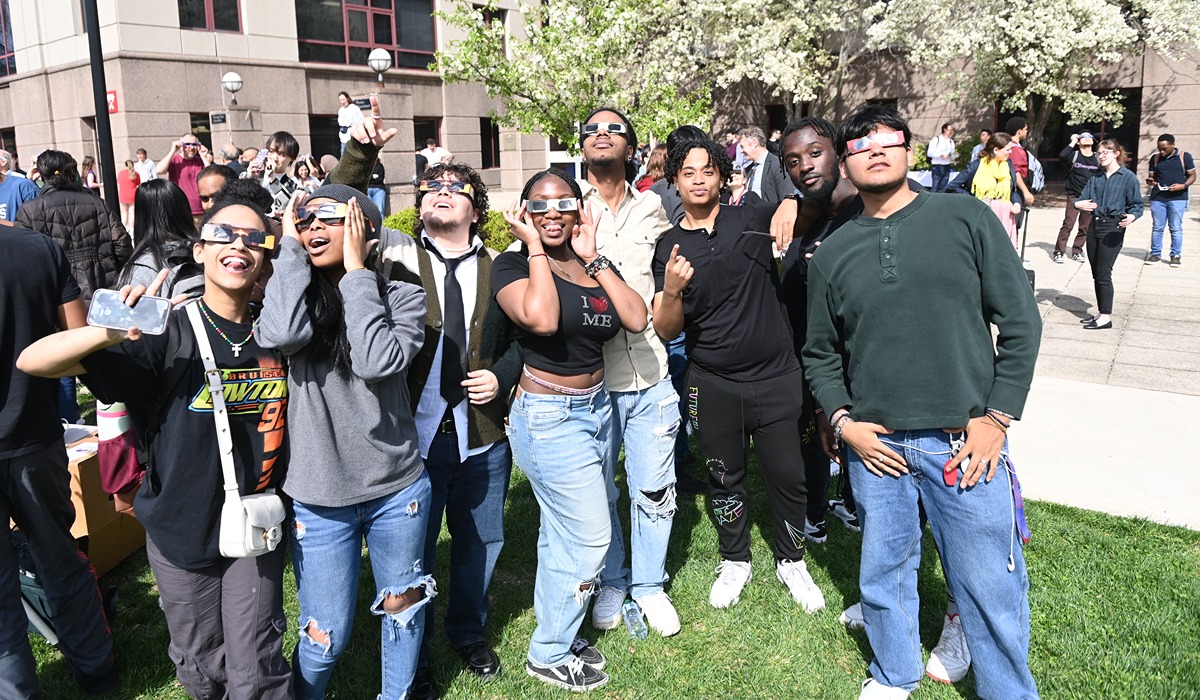
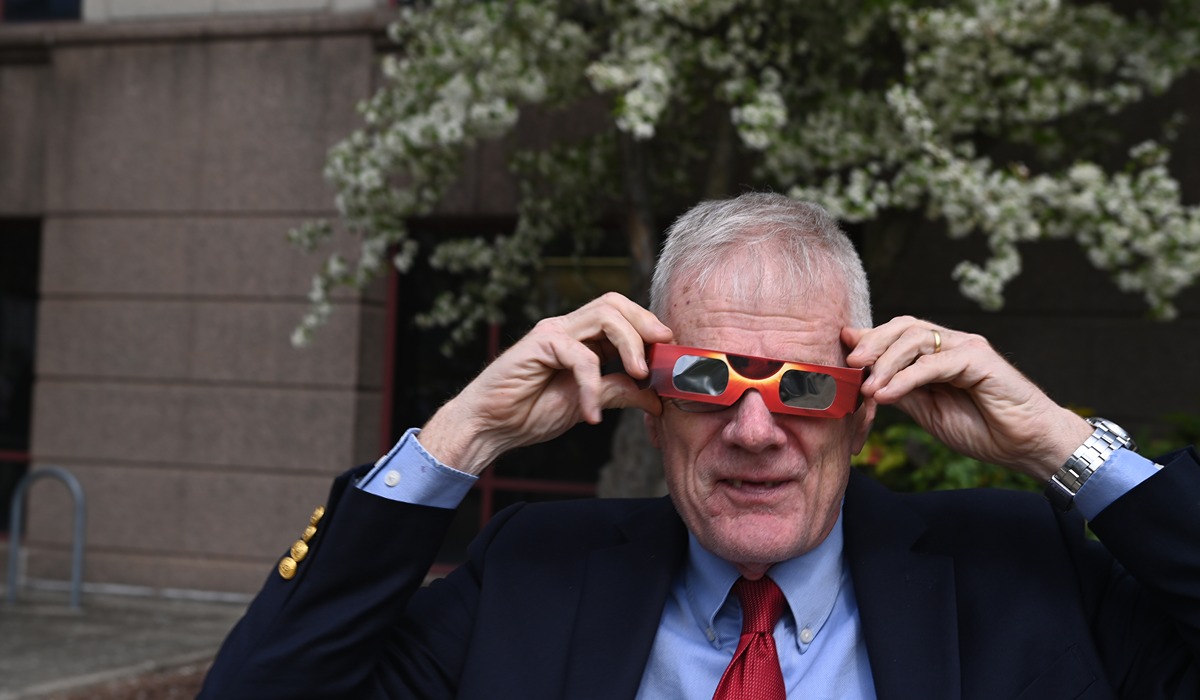
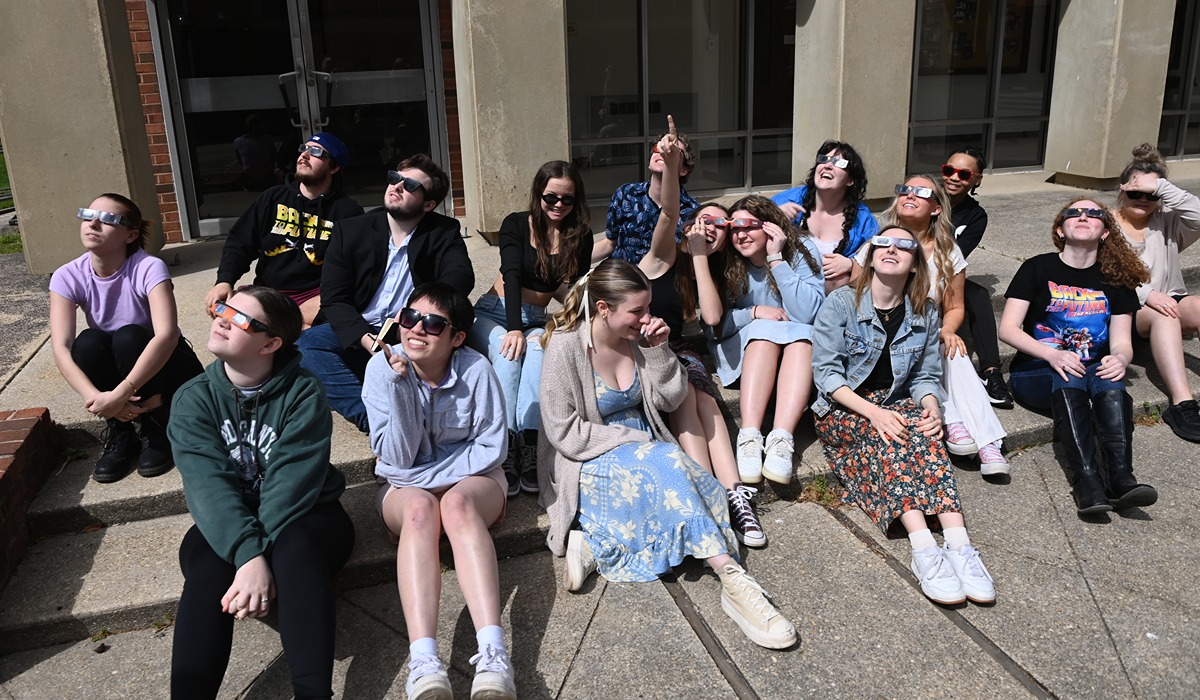

An eclipse enthusiast brought a homemade projector to show and tell others the many ways to safely view the solar event (Catholic University/Patrick G. Ryan)

Jessica Gibson, who studies the sun’s impact on the solar system as an applied space weather research graduate student, showed people in the crowd how scientists identify otherwise-invisible activity on our nearest star.
“If you look through the telescope, you can see a sunspot,” said Jessica Gibson to one student, as she described how the little dark patches that can pop up on the sun’s surface can tell how things are heating up. “It’s pretty cool because a spot has to be pretty big to show up like that.”
It’s interactions like these that illuminate the mysteries of the universe so that the excitement about the eclipse can build into engagement with University-affiliated scientists conducting research at NASA Goddard Space Flight Center, a discovery hub just up the road from main campus.
“It’s very exciting going from class and learning the theory and then to experience it for yourself,” said Funmilayo Erinfolami, who is also earning her master’s degree in applied space weather research. She is among a number of students who built magnetometers deployed along the path of totality from Texas all the way to Canada to detect changes in the Earth’s magnetic field that can impact important technologies such as satellite communications.
“We’re collecting data on the eclipse as we speak,” said Physics Research Associate Professor Gang Kai Poh, a NASA Goddard scientist who started the project with his students last semester. The data will be shared with NASA as part of one of many ongoing collaborations the University has with the agency, with the goal for the findings to be published.
As the crowd surged for the peak of the eclipse, where about 90 percent of the moon covered the sun, Poh said such rare and spectacular events are opportunities for researchers across a broad range of fields to “showcase the work we do.”
“You don’t have to be an expert to appreciate the beauty of the eclipse,” said Poh.